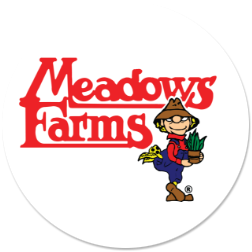
If you’re searching for a shrub with lacy leaves, stunning fall foliage, captivating flowers, autumn berries, and evergreen appeal, look no further than Nandina Domestica, commonly known as Heavenly Bamboo. This plant offers a remarkable array of features that make it a standout choice for any landscape.
Landscape Uses
This versatile plant thrives in full or partial sun, where its foliage displays its most vibrant colors. However, it will also grow well in shady areas of the garden, though the leaf color may not be as intense, and flowering may be less frequent.
Nandina can be used in a variety of ways throughout the landscape. Plant it as a solo specimen for a bold statement, or group three to five plants together for a more impactful display. Combine Nandina with other evergreens, such as Viburnum davidii or low-growing heathers, junipers, or Cypress, to create a visually stunning contrast of textures and hues.
Stunning in All Seasons
One of Nandina’s most outstanding characteristics is its attractive, lacy foliage that resembles bamboo leaves. The new growth emerges in shades of bronze and rose, maturing to a rich green. In the fall and winter, the foliage transforms, showcasing a vibrant array of autumn colors: red, orange, bronze, and pink.
As the plant matures, it may produce large, 8- to 12-inch flower clusters in late summer and early fall, which can eventually give way to striking red berries. These flowers and berries make excellent additions to floral arrangements, providing color and interest year-round.
Will Heavenly Bamboo Spread?
Unlike most plants that we call bamboo, Heavenly Bamboo (Nandina) is not a nuisance plant. Actually, it’s not even a bamboo at all, but a member of the barberry family. The stalks are not like bamboo, but the foliage is. One advantage of Nandina is that it does not send underground sprouts all over the garden as bamboo does. The stems emerge right from the base of the plants.
How to Care for Heavenly Bamboo (Nandina)
- Pruning can be done at any time throughout the year. The cut stems are very popular to use in flower arranging and will last for several days.
- Fertilizing: Nandina will benefit from a yearly, light feeding of a Rhododendron or Evergreen type of fertilizer. Apply the fertilizer in late February or early June. Be sure to water in the fertilizer thoroughly after application, or it is apt to burn the roots and do more damage than good.
- Soil Requirments: Nandina is a relatively easy plant to grow, its only requirement is that it be planted in well-drained soil. Prepare the soil by mixing generous amounts of organic humus, like peat moss, compost, or processed manure with your existing soil.
- Planting or Transplanting: If there is a need to transplant an established plant, it is best done during the fall or winter months. When planting or transplanting be sure to set the root ball at the same level at which the plant was previously growing. A very light layer of bark mulch over the soil will help retain moisture and also help control weed growth.
Nandina Varieties Available at Meadows Farms
Remember, the Nandinas listed below are just a selection of the varieties that Meadows Farms carries. Please call your local Meadows Farms for other varieties or special requests.

